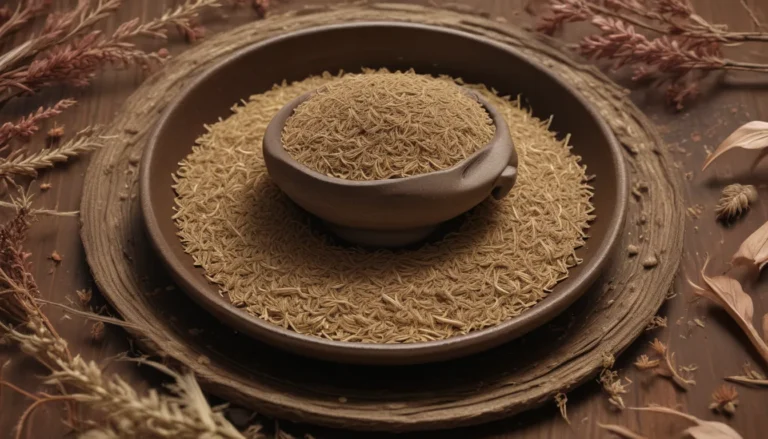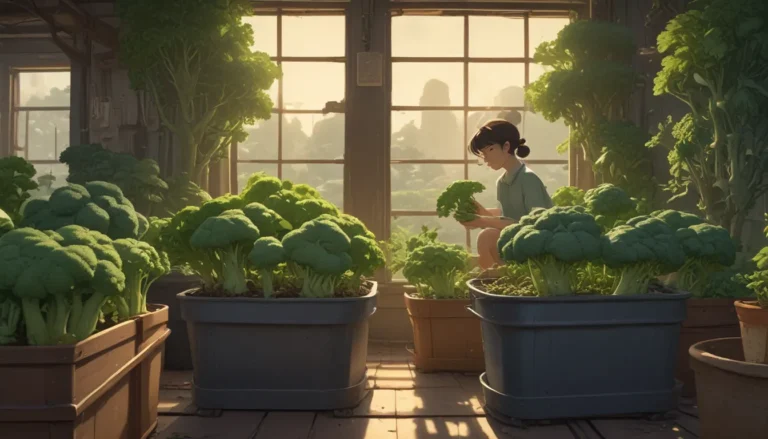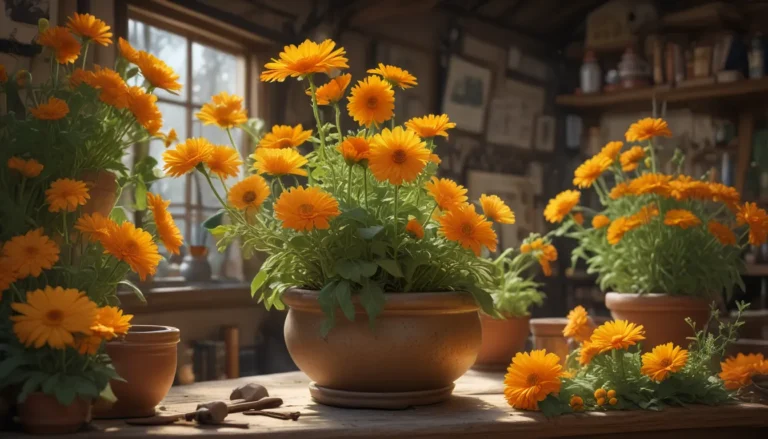The Ultimate Guide to Growing and Caring for Creeping Juniper

Are you familiar with the saying that good things come in small packages? Well, that couldn’t be more true when it comes to creeping junipers! These low-growing evergreens may not rise above a foot tall, but they pack a big punch in terms of impact.
With unique colors like yellow and silver, coupled with their ability to spread up to 10 feet wide, creeping junipers offer extensive coverage with minimal effort.
But there’s more to these plants than just their appearance. They are incredibly low-maintenance and practically thrive on neglect, making them the perfect “set it and forget it” addition to any garden.
In this comprehensive guide, we’ll delve into everything you need to know about growing and caring for creeping juniper. From cultivation and propagation to pruning and maintenance, we’ve got you covered. So, grab a cup of tea and let’s explore the enchanting world of creeping junipers together!
What You’ll Learn
Today, we’ll be diving into the following topics:
- What Is Creeping Juniper?
- Cultivation and History
- Propagation
- How to Grow
- Growing Tips
- Pruning and Maintenance
- Cultivars to Select
- Managing Pests and Disease
- Best Uses
- Quick Reference Growing Guide
When I was younger, I used to mistake the name “creeping juniper” for “creepy juniper,” which only added to their mystical allure in my mind. However, as I grew older and learned more about these marvelous plants, my appreciation for them deepened further.
So, join me on this botanical journey as we unravel the secrets of creeping junipers and discover why they are truly nature’s hidden gems.
What Is Creeping Juniper?
Juniperus horizontalis, also known as creeping juniper, hails from cold, dry regions across the US and Canada. Its creeping growth habit, with its compact stature and resilient nature, evolved to thrive in harsh conditions like stony outcroppings and rocky slopes.
These tough plants boast opposite scale-like leaves that transition from needle-like when young. With foliage that ranges from green to blue or even purple, creeping junipers are a sight to behold. While the species produces juniper berries in the wild, cultivated varieties may not bear fruit due to their smaller size and the need for pollination by both male and female plants.
Highly adaptable to challenging conditions, creeping junipers are salt and pollution-tolerant, making them ideal choices for difficult garden spots. Moreover, their year-round color and interest ensure they hold their own in any landscape.
Cultivation and History
Creeping junipers have a rich history of cultivation, with records of J. communis dating back to 1560. While specific details about the cultivation of J. horizontalis are scarce, it’s evident that this North American native has been a garden favorite for centuries.
Today, there are numerous cultivars of creeping juniper available, each showcasing the distinctive prostrate form embodied by the Latin epithet horizontalis. Ranging in size and color, these cultivars offer gardeners a diverse selection to choose from.
Propagation
If you’re considering propagating creeping junipers, cuttings are your best bet. Starting new projects from cuttings ensures reliable reproduction of desired characteristics, making it a popular choice among gardeners.
Opt for young, firm wood when selecting cuttings, preferably new growth from the previous summer. Rooting hormones can aid in successful propagation, giving your cuttings the boost they need to develop roots and grow into healthy plants.
Whether you’re a seasoned bonsai enthusiast or a novice propagator, using cuttings to create new creeping junipers is a rewarding and straightforward process that yields beautiful results.
From Cuttings
To propagate J. horizontalis from cuttings, follow these simple steps:
- Select young, firm wood for cuttings.
- Dip the cut ends in rooting hormone for optimal growth.
- Plant the cuttings in containers filled with well-draining soil.
- Water the soil and place the container in a bright, indirect light.
- Monitor the cuttings for root development and growth over time.
By following these steps, you’ll soon be rewarded with a flourishing collection of creeping junipers ready to enhance your garden.
From Seedlings
Planting creeping juniper seedlings is a hassle-free process that requires minimal preparation. Simply transplant your seedlings into well-draining soil and water them regularly to ensure healthy growth.
How to Grow
When it comes to growing creeping junipers, well-drained, sandy soil and ample sunlight are key. These resilient plants thrive in sunny locations with minimal moisture, making them perfect for dry, challenging environments.
While creeping junipers can tolerate heavy soil, they mustn’t remain constantly wet. Incorporating well-rotted compost into sandy or clay soil can improve drainage and enhance your plants’ growth.
Remember, the key to successful growth lies in providing your creeping junipers with the optimal conditions they need to thrive.
Growing Tips
For optimal growth, follow these essential tips:
- Grow your junipers in full sun or partial shade.
- Avoid overly wet soil, as these plants prefer well-drained conditions.
- Water your junipers when the top two inches of soil are dry.
By following these tips, you’ll pave the way for healthy, vibrant creeping junipers that adorn your garden with beauty year-round.
Pruning and Maintenance
The great thing about creeping junipers is that they require minimal pruning. Simply remove any dead or diseased branches as needed, allowing your plants to retain their natural shape and beauty.
With their low-maintenance nature, creeping junipers offer hassle-free gardening solutions for busy plant enthusiasts.
Cultivars to Select
With a vast array of creeping juniper cultivars to choose from, selecting the perfect one for your garden is a delightful endeavor. From Blue Forest to Mother Lode, each cultivar offers unique colors and forms that add character to your landscape.
Here are a few noteworthy cultivars:
- Blue Forest: A miniature delight with upright branches and distinct blue foliage.
- Blue Rug: Ideal as a groundcover, forming a dense rug that prevents weed growth.
- Hughes: Featuring silver-blue foliage, perfect for rocky slopes and arid environments.
- Lime Glow: A vase-shaped shrub with vibrant chartreuse foliage that adds a pop of color to your garden.
- Mother Lode: Boasting yellow-orange foliage and a sprawling growth habit, ideal for adding a touch of gold to your landscape.
By choosing the right cultivar, you can personalize your garden with creeping junipers that suit your aesthetic preferences and enhance your outdoor space.
Managing Pests and Disease
While creeping junipers are resilient plants, they are not immune to pests and diseases. By keeping an eye out for common issues like spider mites, scale, and blight, you can safeguard your plants and ensure their health and vitality.
Pests
- Spider Mites: Watch for yellow spots, browning leaves, and fine webbing, which are signs of spruce spider mites. Control infestations by spraying the plant with water and practicing good garden management.
- Scale: Look out for lumps and bumps on stems, indicating a scale infestation. Treat with horticultural oil to suffocate and eliminate the pests.
Disease
- Blight: Cercospora blight can affect creeping junipers, causing browning leaves that spread over time. Prune infected branches and treat with copper fungicide to combat the disease.
By identifying and addressing pest and disease issues promptly, you can protect your creeping junipers and ensure their longevity in your garden.
Best Uses
Whether you’re a bonsai enthusiast or a xeriscape gardener, creeping junipers offer versatile uses that cater to a range of gardening styles. These plants are ideal for ground cover, specimen planting, and rock gardens, adding texture and interest to your landscape.
Quick Reference Growing Guide
For quick and easy access to essential information about creeping junipers, refer to this handy guide:
- Plant Type: Woody shrub
- Foliage Color: Blue, yellow, green, bronze, purple
- Native to: North America
- Tolerance: Drought, salt, depleted soil
- Hardiness (USDA Zone): 3-9
- Soil Type: Sandy to clay
- Season: Evergreen with persistent berries
- Soil pH: 5.5-7.5
- Exposure: Full sun to part shade
- Soil Drainage: Well-draining
- Time to Maturity: 5-10 years
- Attracts: Birds
- Planting Depth: Same depth as container
- Spacing: 18 inches to three feet
- Height: Up to 2 feet
- Spread: Up to 10 feet
- Growth Rate: Slow to moderate
- Water Needs: Moderate
- Common Pests and Disease: Scale, spider mites, blight
With this comprehensive guide at your fingertips, you’ll be well-equipped to care for and grow your creeping junipers with ease.
Look Down for Carefree Beauty
Creeping junipers may be small in stature, but their impact on the landscape is immense. With minimal maintenance requirements and year-round interest, these versatile plants offer a hassle-free solution for adding beauty to your garden.
As you embark on your journey with creeping junipers, remember to appreciate the simplicity and elegance these plants bring to your outdoor space. Feel free to share your experiences and gardening adventures with us in the comments!
For more information on junipers and other captivating evergreens, check out our enticing guides:
– How to Grow and Care for Juniper Shrubs
– How and When to Prune a Juniper Shrub
– Tips for Growing Skyrocket Junipers
– Juniper Herbal Uses: Put This Natural Powerhouse to Work for You
With these insights and tips, you’re now well-versed in the art of growing and caring for creeping junipers. So, go ahead and dive into the world of these charming plants, and watch as your garden transforms into a haven of beauty and tranquility. Happy gardening!





